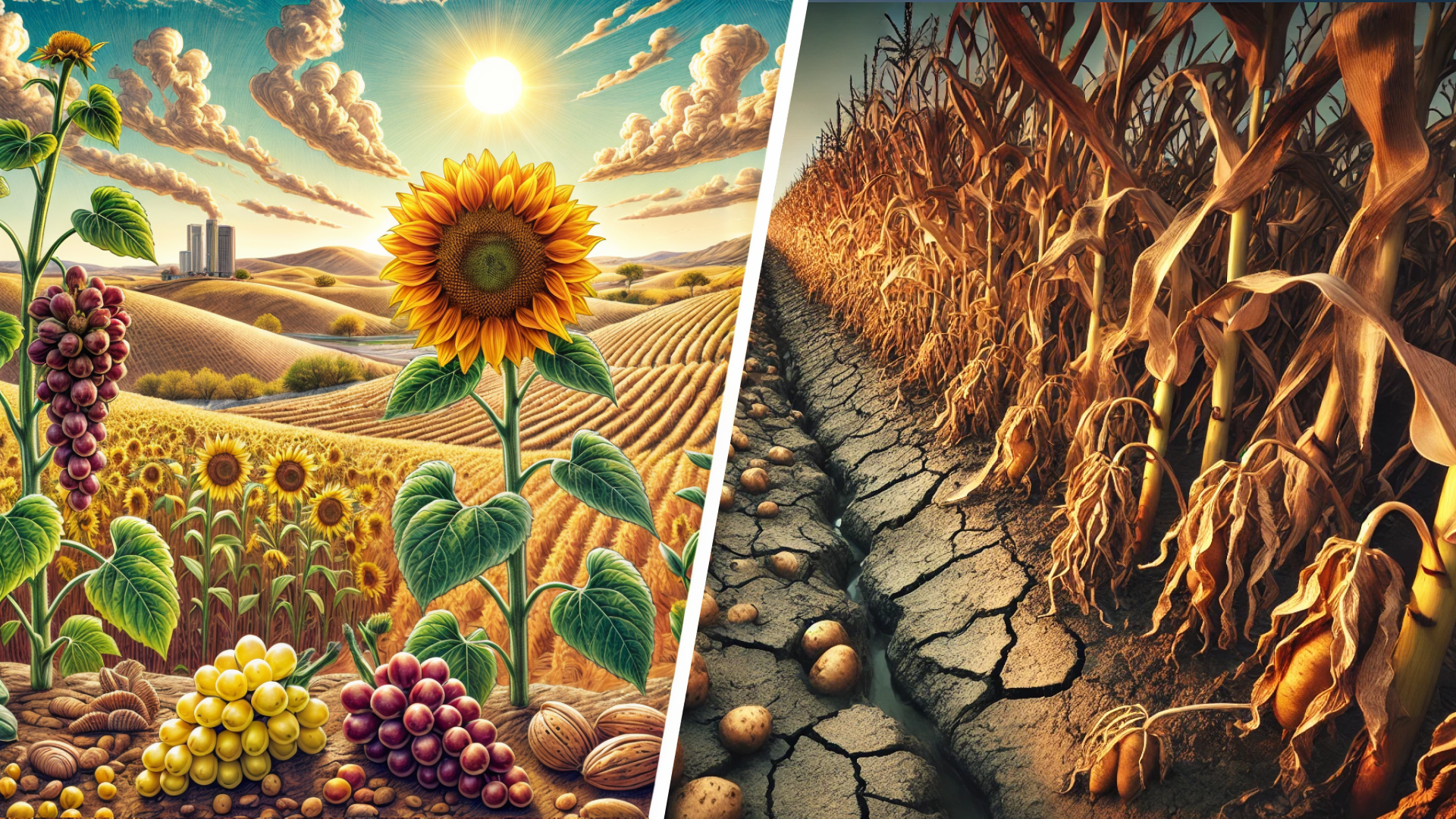Predicting exactly which crops will thrive in Central Europe over the next decade due to climate change is challenging. However, advanced AI models offer valuable insights. Many of these tools are freely available for public use. Explore our list of AI models, harness their potential, and make informed decisions about the future of farming.
A range of sophisticated models can predict how Central European agriculture will evolve under climate change. These tools integrate climate projections, soil conditions, and economic factors to forecast changes in crop yields, livestock performance, and farming practices. AI tools like GCMs, RCMs, and crop models such as DSSAT and AquaCrop are indispensable for predicting Central Europe’s agricultural future. Below are some key types of models used in these predictions:
1. Global Climate Models (GCMs)
These large-scale models simulate climate systems and predict future trends in temperature, precipitation, and extreme weather. For Central Europe, GCMs project warming temperatures, more frequent droughts, and unpredictable rainfall patterns—factors that will heavily influence agriculture.
2. Crop Simulation Models
Models like DSSAT (Decision Support System for Agrotechnology Transfer) and AquaCrop predict crop performance under various climate scenarios. They estimate yields, water requirements, and optimal planting times. In Central Europe, wheat, maize, and barley are commonly studied, with these models indicating shorter growing seasons and potential yield declines due to heat and water stress.
- AquaCrop: Developed by the FAO, AquaCrop focuses on crop responses to water availability, ideal for regions where water is a critical limiting factor. It strikes a balance between simplicity, accuracy, and robustness, using intuitive parameters to predict crop outcomes under various management and environmental conditions.
- DSSAT: Used globally by researchers and policymakers, DSSAT simulates the growth of over 42 crops, integrating data on soil, weather, and crop management. The tool enables virtual experiments that would take years in real-world conditions, making it invaluable for long-term agricultural planning.

3. Integrated Assessment Models (IAMs)
IAMs merge environmental, economic, and social factors to provide comprehensive agricultural forecasts. These models suggest that Central European farmers may need to adapt by adopting drought-resistant crops, enhancing irrigation systems, or adjusting farming techniques.
4. Regional Climate Models (RCMs)
Focusing on specific areas, RCMs provide localized climate projections. In Central Europe, they reveal how certain regions may become unsuitable for traditional crops while new opportunities arise for others. RCMs also assess impacts on soil moisture, pests, and crop diseases—critical for adapting future agricultural practices.
5. Agro-Economic Models
CAPRI (Common Agricultural Policy Regionalized Impact) is a key tool in this category, integrating climate and economic data to predict agricultural productivity, market prices, and land use changes. CAPRI offers long-term projections on how climate change will affect European farming, with a particular focus on sustainability and resilience.
What Does the Future Hold for Crops in Central Europe?
As the climate shifts, certain crops may adapt better than others. Here’s a breakdown of likely winners and losers:
Crops Likely to Thrive or Adapt
- Sunflowers: Drought-tolerant sunflowers may expand, particularly in southern Hungary and Austria, as heatwaves become more common.
- Grapes: Warmer temperatures could boost wine production, allowing grape varieties typically grown in southern Europe to move northward.
- Soybeans: Soybeans, which thrive in warm, dry conditions, could become more widely planted, especially in Hungary and the Czech Republic.
- Sorghum: Known for its resilience to heat and drought, sorghum could replace water-intensive crops like maize in areas hit by frequent droughts.
- Almonds: Warmer conditions may open the door for crops like almonds, traditionally grown in Mediterranean regions, to be cultivated in parts of Central Europe.
Crops Likely to Face Challenges
- Maize (Corn): Sensitive to heat and water stress, maize yields are likely to decline, with farmers needing to explore heat-tolerant varieties or alternatives like sorghum.
- Wheat: While adaptable, wheat may struggle under extreme heat and irregular rainfall. Winter wheat could remain viable if rainfall increases in colder months, but irrigation will be critical.
- Barley: Rising temperatures and droughts could reduce barley yields, especially in rain-fed areas.
- Potatoes: Highly sensitive to heat and drought, potato production may suffer without significant improvements in irrigation and heat management.
- Sugar Beet: Prolonged heat and water shortages pose a threat to sugar beet yields, especially in southern regions, despite efforts to breed drought-tolerant varieties.

Adaptation Strategies for Central European Farmers
To ensure resilience against these challenges, farmers may adopt the following strategies:
- Switch to Drought-Resistant Varieties: Developing or adopting crop varieties that can withstand higher temperatures and lower water availability will be essential.
- Expand Irrigation: Efficient water management will be crucial, although it may be unsustainable long-term due to water scarcity.
- Diversify Crops: Growing a broader range of crops suited to warmer and drier conditions (e.g., sorghum, soybeans) will mitigate climate risks.
- Adjust Planting Schedules: Shifting planting dates to align with new climate patterns can help sustain productivity.
In summary: proactive adaptation strategies, including crop diversification and improved irrigation, will be vital to maintaining agricultural productivity in the region over the next decade. In the next episode of the AGRI-FOOD.AI podcast, you will hear about the short-term plans and programs from the State Secretary of Agriculture and Rural Development of Hungary, the current holder of the EU Presidency. Tune in – with us, the future starts now!
And don’t forget to stick with us week after week!. Connect with us online fill out the form on our website, and we’ll get back to you ASAP. Send us your questions, share your experiences, and we’ll turn them into podcast with answers and solutions from the world of IT and AI technologies. Catch us on Spotify, Apple podcasts, and YouTube. Subscribe to our channel to be the first to know when a new episode drops.
 2024-11-26
2024-11-26  PODCAST
PODCAST
 share
share


 Our website uses cookies
Our website uses cookies